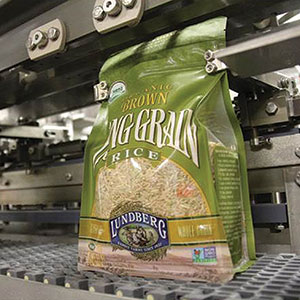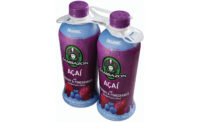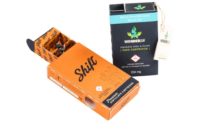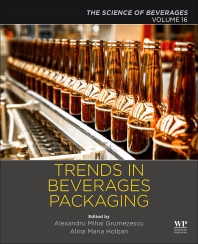A quick scan of any store shelves reveals the growing success of standup pouches, which have gained ground in a wide variety of markets including snack food, confectionary, baby food, produce, alcohol, pet food and even motor oil.
The statistics back up the evidence on shelves. According to Freedonia Group analyst Joe Pryweller, the demand for pouches, particularly stand-pouches, is forecast to increase 3.6 percent per year through 2017. The steady market growth and expanding range of options for customization puts standup pouches in good standing for the future of packaging.
In addition to gaining shelf space for a variety of applications, standup pouches have shifted into countless new shapes. As pouch packaging increases, so does the need for product differentiation. Advances in pouch-making technology and machinery have led a wider range of pouch shapes, which allows brands to set themselves apart. Pouches also offer versatility in packaging design and closures to help with brand differentiation as well as offering new conveniences to consumers.
For instance, pouches can now be made with clear windows so consumers can view the product. They can also offer reclosability with zippers and sliders. Spouted pouches offer easy pouring and can be made with a variety of fitments. Other options such as valves, vent holes, handle holes, tear notches and hanger holes offer an endless array of options for any brand.
Here are a few other examples of innovation and new opportunities for pouches:
The Box Pouch
The inserted side-gusset pouch, also known as the box pouch, is an emerging application in the market. This pouch format is more complex than a traditional standup pouch, and is quite popular in the pet food, lawn and garden, medical, grocery, and apparel markets – all of which yield a higher demand for larger packages with more capacity.
The box pouch features a stable platform for shelf display. This eco-friendly format is shelf stable; has liquid-fill capability; is easily stackable; has five printable surfaces; and uses 12 percent less film consumption compared with a conventional stand-up pouch of the same capacity.

|
|
The eco-friendly box pouch is shelf-stable, has liquid-fill capability, is easily stackable, has five printable surfaces, and uses 12 percent less film consumption compared with a conventional standup pouch of the same capacity. |
A number of major packaging converters throughout North America produce the box pouch, creating a range of diverse, shelf-friendly, side-gusseted pouches. These converters include Peel Plastics, Bemis, Plastic Packaging Technologies, Valley Packaging Supply, Mondi Corp., Bryce, Coveris, PolyCello Ltd., Printpack, and Gateway.
Consumer Packaging
Migration from paper and rigid to flexible packaging has grown steadily over the recent years. One example is pet food. Packaging in a pet food store features many packages in plastic pouches (standup pouches), laminated plastic bags and box pouches. There are still a good number of products in paper bags, but it is a relatively flat market. In fact, a lot of commodity dry pet food is looking to get away from paper and move to flexible packaging. Premium pet food is angling for the best optimization of product display on the shelf and/or on a pallet depending on product weight.
Totani America
(920) 632-7319
www.totani.co.jp/en


_web.jpg?height=200&t=1645110028&width=200)

